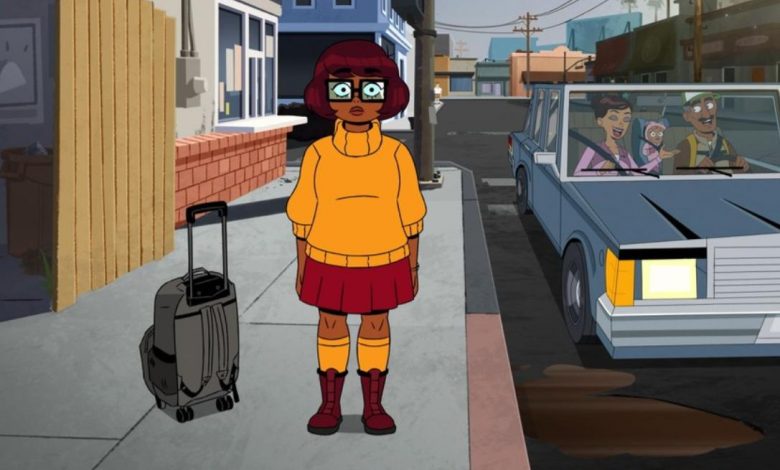HBO Max’s Velma: What Went Wrong, and how to do an “Adult” Scooby-Doo Right

Joe Meola ‘25 / Emertainment Monthly Staff Writer
Spoilers ahead.
On Jan. 12, HBO Max released the initial two episodes of Mindy Kaling’s Velma, an adult animated series meant to serve as a prequel to Warner Bros’ Scooby-Doo property focused on the character of Velma. Scooby-Doo is a property that has existed for decades, providing audiences with a family-friendly spin on horror and mystery storytelling. Due to the property’s decades-long tenure, there are several generations of fans who have enjoyed different versions of the Scooby-Doo stories in their youth and have since grown up. The franchise now growing up itself should be something special, carefully thought out to stay true to the heart of the original series while incorporating more mature elements from the kinds of stories that inspired the original. Velma, however, has thus far proven not to be that aforementioned something special. The series has received overwhelmingly negative reviews and does not treat the world and characters of Scooby-Doo with the respect that a 54-year-old franchise deserves.
The overall premise of Velma is surprisingly not nearly as bad as the execution of its plot and characters: Geeky teen Velma Dinkley has to solve a series of murders of her own classmates, as well as the long-unsolved disappearance of her mother. Furthermore, due to her guilt surrounding her mother’s disappearance, she suffers severe panic attacks accompanied by hallucinations whenever she does any mystery-solving. This is a fantastic premise that stays very true to the character of Velma, but as stated above, the series’ execution is incredibly disrespectful towards the world and characters of the Scooby-Doo franchise. In order to place Velma in the spotlight, the series makes a mockery of the other staple main characters of the franchise.
First of all, Scooby is not present, which is fine since the series serves as a prequel, but his absence is definitely felt. Next, Fred Jones is not the loveable, brave-yet-dumb leader he is commonly portrayed as, but rather a whiny, spoiled-rich brat with anger issues. The usually kind-hearted Daphne is portrayed as a shallow “it” girl who is obsessed with social status and deals drugs on the side. Shaggy, often chill, goofy, cowardly, and very hungry (also often speculated to be a stoner) is portrayed as Velma’s guy best friend who is also hopelessly in love with her (and also strongly anti-drug, which is honestly a funny bit, although used too often in the series).
At times—such as the locker room scene at the start of the first episode—it is made apparent that Velma is also meant to serve as a parody of overly-moody, over-sexualized teen dramas such as Riverdale. However, Velma’s parodying such series is unsuccessful when it makes the same mistakes it is trying to critique, such as the over-sexualization of teenagers—particularly same-sex kisses between young women—while also sexualizing its cast of highschool-age characters and making a same-sex kiss between Velma and Daphne a critical moment of the series. It is revealed that the two young women have romantic feelings for each other—and it is certainly nice to have some queer representation in a long-running franchise—but the moment does not feel earned by any means.
A common criticism thrown around about Velma is its racebending of most of the main cast. This is a criticism with no validity whatsoever. Racebending characters like Velma and Shaggy can work just fine. In fact, Mindy Kaling does a fairly decent job portraying Velma and could do an even better job under better circumstances, but the characters still need to be portrayed well regardless of their race. Shaggy being portrayed as Black is perfectly fine, but he needs to be written and voiced like Shaggy, not a character that vaguely resembles him.
So much could be done to improve upon this series and make a truly worthwhile “adult” adaptation of Scooby-Doo. First of all, the main characters of the franchise work best when they share the spotlight with one another, so a proper adult animated Scooby-Doo series should focus on the entirety of the Mystery Incorporated gang (including Scooby) rather than just Velma. Secondly, most of the traditional, most-iconic stories in the franchise involve the gang solving mysteries surrounding some sort of elusive criminal in a monstrous masked disguise. This type of storytelling is not unlike that found in the slasher genre of horror films, in particular the Scream franchise.
Scream provides a solid basis for what could be a great adult Scooby-Doo series. The series of films entails a rotating cast of characters plagued by a masked, knife-wielding killer (or killers), whose identity they must deduce in each film as they get gruesomely killed off by them one-by-one. Introducing slasher elements in general could provide the Scooby-Doo franchise with a natural progression towards maturity. Perhaps, an adult spin on the franchise could tell a season-long ongoing storyline of the gang solving a series of gruesome murders tied to a masked killer meant to be a rebooted version of a classic enemy from a past iteration of Scooby-Doo, or even someone new. Alternatively, each episode could be a different masked killer, with a healthy mix of old and new faces to the franchise, with each foe providing different stakes and roadblocks for the main cast to overcome.
A key component of adult animation is its “adult” humor, often consisting of jokes related to sex, drugs, alcohol, politics, and other “adult” topics. Velma has an over-reliance on such humor with a lack of actual substance to support it. Adult humor could fit the world and characters of Scooby-Doo quite well, but it needs to be utilized correctly. Humor should be used as a means of complimenting the plot, not the other way around.
Overall, Scooby-Doo has so much potential to be adapted for a more mature audience. Velma, however, is an incredibly unsuccessful attempt at this, as evidenced by the negative response from fans, critics, and casual viewers.